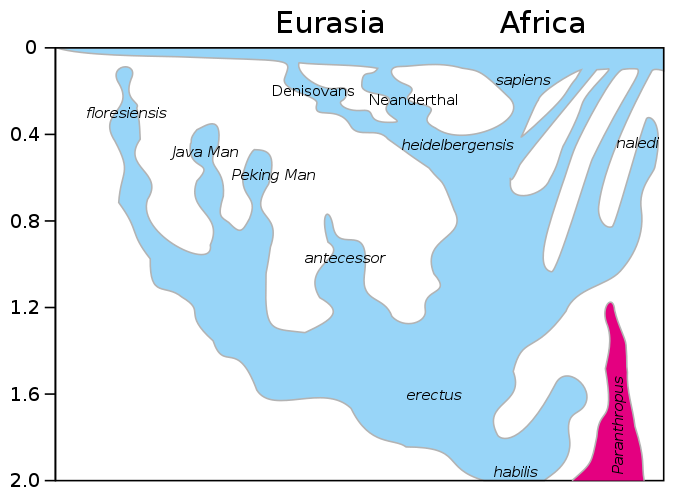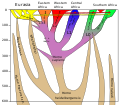File:Homo lineage 2017update.svg
外觀

此 SVG 檔案的 PNG 預覽的大小:675 × 498 像素。 其他解析度:320 × 236 像素 | 640 × 472 像素 | 1,024 × 755 像素 | 1,280 × 944 像素 | 2,560 × 1,889 像素。
原始檔案 (SVG 檔案,表面大小:675 × 498 像素,檔案大小:21 KB)
檔案歷史
點選日期/時間以檢視該時間的檔案版本。
| 日期/時間 | 縮圖 | 尺寸 | 用戶 | 備註 | |
|---|---|---|---|---|---|
| 目前 | 2017年12月20日 (三) 11:02 |  | 675 × 498(21 KB) | Dbachmann | |
| 2017年12月20日 (三) 09:27 |  | 675 × 498(20 KB) | Dbachmann | ||
| 2017年12月20日 (三) 08:54 |  | 675 × 498(19 KB) | Dbachmann | {{Information |Description= |Source= |Date= |Author= |Permission= |other_versions= }} | |
| 2017年12月19日 (二) 10:44 |  | 561 × 465(16 KB) | Dbachmann | User created page with UploadWizard |
檔案用途
沒有使用此檔案的頁面。
全域檔案使用狀況
以下其他 wiki 使用了這個檔案:
- af.wikipedia.org 的使用狀況
- cs.wikipedia.org 的使用狀況
- en.wikipedia.org 的使用狀況
- es.wikipedia.org 的使用狀況
- eu.wikipedia.org 的使用狀況
- fa.wikipedia.org 的使用狀況
- id.wikipedia.org 的使用狀況
- ja.wikipedia.org 的使用狀況
- pl.wikibooks.org 的使用狀況
- pt.wikipedia.org 的使用狀況
- ro.wikipedia.org 的使用狀況
- ru.wikipedia.org 的使用狀況
- te.wikipedia.org 的使用狀況
- uk.wikipedia.org 的使用狀況
- vi.wikipedia.org 的使用狀況
- zh-yue.wikipedia.org 的使用狀況






